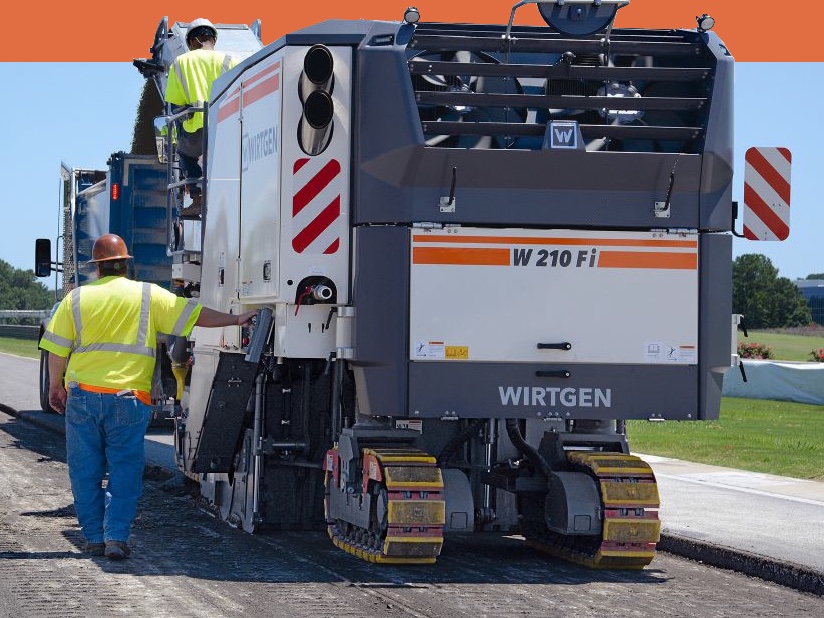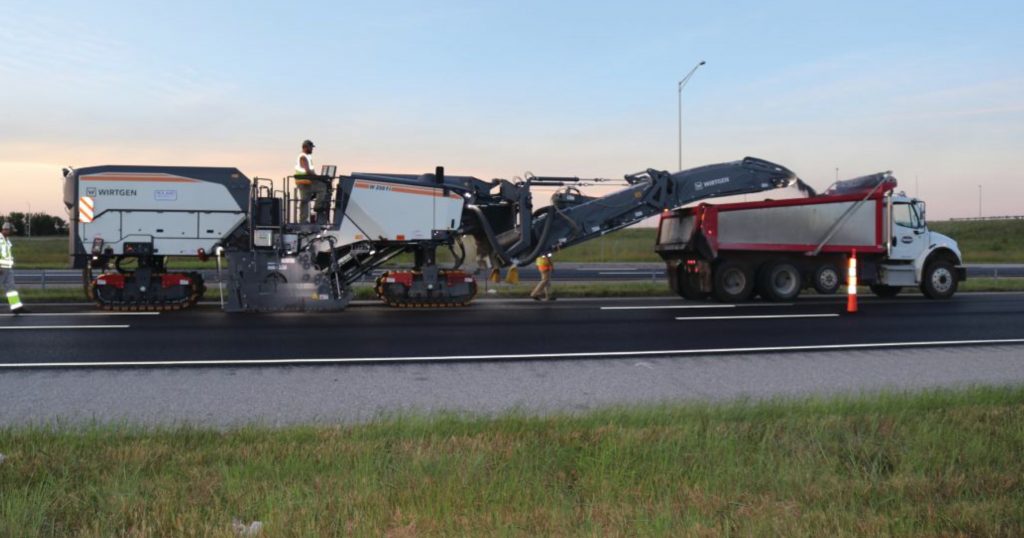
Features
Roads & Paving
Technology
Milling preparation: Best practices for planning your milling project
July 6, 2021 By Andrew Snook

When it comes to rebuilding and repairing roads, milling plays a vital role. According to Tom Chastain, milling product manager for Wirtgen America, it is a type of art form.
“Our job as the milling crew is to give the paving crew a clean pallet to paint a masterpiece on,” Chastain says.
“If we mill a road properly, the paving crew stands a greater chance of achieving their quality.”
Planning out a successful milling operation starts with effective communication from the office down to the superintendent or foreman on site and then trickled further down to the milling crew and beyond.
“We need to talk to the truck drivers and let them know how we’re going to approach the job, so that way, we can do this in a safe and seamless manner. We have safety personnel. They also need to be well aware, as far as what we plan on doing on the milling job as far as having full lane closures, things of that nature. If we’re milling for someone else, we also need to know what they’re expecting of us,” Chastain says.
Although communication is key, Chastain says ensuring you’re using the right machines to fit your application is equally important.
“We need to ask ourselves some questions. First, what machine do I need? If we’re going to just do some small curb reveal joints going around manhole covers, things of that nature, we can use a small machine,” he says. “If we’re doing some larger patchwork, we’ll need a compact or mid-size machine. Or, are we going to be in a job where we’re going to need to bring out the big kid and let it eat? These are the things we really need to understand.”
Proper maintenance
Chastain says proper maintenance is another vital aspect of any milling operation to ensure an operator’s equipment is in top working order for all of its tough applications before it gets to the jobsite.
“They are designed to beat themselves to death as soon as you put them into the ground. We’ve got to make sure they are well maintained, so when we get out there on the job they’re going to perform at an optimum level; because if it is a mill-and-fill situation, and you have not done the maintenance and the milling machine goes down, then everything else goes down in the same process – there’s a domino effect,” he says.
The lifeblood of a milling machine is its cutter drum, and it needs to be in top working order at all times.
“The cutter drum is what makes the milling machine go.”
“We could put two jet engines on a milling machine, but if the cutter drum is not in optimum working order, we’re not going to produce the quality, nor the quantity, that we need to get,” Chastain says.
Two of the main items that need to be checked on a cutting drum are the milling teeth and holders.
“These things do wear. We need to make sure the cutting drum is ready to go before it gets on the job,” Chastain says, adding that the kicker paddles should be checked regularly as well.
“Those kicker paddles are designed to resist the removal of that material from inside the cutter house to eject it onto the conveyor belt.”
Milling crews should also ensure that the drum cooler level is at the manufacturer’s specifications.
“That drum coolant is not only a coolant – a fifty-fifty mixture of antifreeze and water – but it’s also balanced to help keep the weight centered on the drum,” Chastain says.

Planning out a successful milling operation starts with effective communication from the office down to the superintendent or foreman on site and then trickled further down to the milling crew and beyond. Photos: Wirtgen America.
He adds that crews should also make sure they have spare cutting teeth and holders on site to decrease potential downtime on a job where crews would otherwise have to wait for replacement teeth to get delivered from the office, an OEM, or their local equipment dealer. Spray nozzles also need to be checked to ensure they are spraying the way they were intended to perform.
Grade control selection
When it comes to grade controls, there are often many available options on the control panels from smart cylinder systems to wire-rope systems, slope sensors, ultrasonic sensors, laser, 3D and more.
It is important to ensure an operator is using the correct grade control application for their job.
“We need to understand which one of these we’re going to be utilizing and what best fits the application,” Chastain says.
Additional prep work
Before milling begins on a jobsite, crews should establish a quality zero point on the machine.
“What we’re looking to do is make sure the teeth just barely touch the ground. We want the full length of the drum to barely scuff the drum. That gives us our quality zero reference point,” Chastain says.
Knowing where to start and stop the milling machine is also extremely important. “I’m going to start on the back numbers or marks on my side plate because that’s going to be the point of contact where the tooth actually hits the ground; and I’m going to stop on the front because that’s the exit point of the cutting tool,” Chastain explains, adding that this will help for making the machine line up properly during a second pass.
Chastain says when starting a milling job, it’s best to take it slow.
“When you put the machine in the cut, and you start moving, you want to start slow. That way you give the tracks enough time to get into the cuts and give the hydraulics enough time to react, so you can bring the machine in. Once the tracks are in the cut, then you can build up speed. If you don’t, you’ll come barreling off the joint, the machine is going to come down too fast and you’re going to leave a dip in the road,” he says.
The operator should also know which milling operations option would work best for the job at hand.
“With the new operating systems on the F Series machines, we now can set the machine parameters to accomplish the various applications we encounter on milling jobs. For example, we now have three main operating modes, with the capabilities of having the machine adjust to the situation,” Chastain says. “Our Eco mode is for the jobs where we are looking for lower fuel consumption, lower tooth cost, and lower CO2 emissions while maintaining quality performance. The second selection is Power mode. In Power mode we are looking for the optimum production from the machine. We use Power mode when we have deeper, and or harder cuts. And last, but not least, we have Pattern mode. Pattern mode allows the operator to select a pattern quality that ranges depending on drum spacing they have. While running Pattern mode, the machine can control our feet per minute and drum rpm.
“This allows the machine to maintain the same selected pattern quality from curb to curb. Our new mill assist operating systems allow us to achieve economy, production, or pattern for the customer while also saving or lowering fuel, CO2, and noise levels.”
Print this page